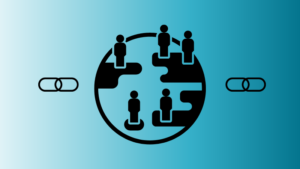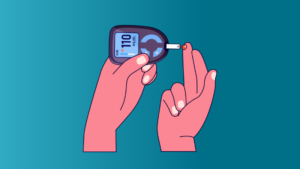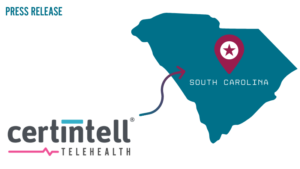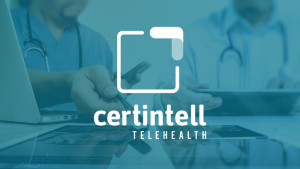 At the Junction of Population Health and RPM: Population health, the concept of analyzing health outcomes for groups of people, instead of on an individualized, patient-by-patient basis, has been shown to better identify high-risk patients, improve patient outcomes, and deliver effective care. Population health, according to the Centers for Disease Control and Prevention (CDC), is “an interdisciplinary, customizable approach that allows health departments to connect practice to policy for change to happen locally.” ¹
At the Junction of Population Health and RPM: Population health, the concept of analyzing health outcomes for groups of people, instead of on an individualized, patient-by-patient basis, has been shown to better identify high-risk patients, improve patient outcomes, and deliver effective care. Population health, according to the Centers for Disease Control and Prevention (CDC), is “an interdisciplinary, customizable approach that allows health departments to connect practice to policy for change to happen locally.” ¹
Focusing on the health of entire populations can provide health centers with data that is comprehensive and actionable on a broader level. For instance, identifying a target population that is experiencing similar health disparities will allow providers to create a targeted action plan for this subgroup, which allows both patient and provider to be proactive in wellness improvement, rather than reactive.
Population health programs are vital to a value-based care (VBC) environment, and providers should know their options for implementing one in the most cost-effective and burden-free manner. In this article, learn how to segment your patient populations by need, create a system for flagging high risk patients with RPM, and determine the social determinants of health (SDOH) that commonly impact patients’ health goals.
Population health encourages lifelong health behavior changes that, along with RPM, can be a great way for patients and clinics to see overall improvement. Spyglass Consulting Group created a report which found that recent increased emphasis on population health management has increased the use of RPM solutions as well; upward of 88 percent of hospitals and health systems have implemented RPM services to improve their population health. ²
According to Digital Commerce 360, “RPM is an optimal population health solution for chronic disease because it offers healthcare providers several benefits, two of which are: better data for improved outcomes and increased patient engagement.” ³
Changing patient behavior starts with understanding their habitual patterns. A population segmentation analysis can help you pinpoint these needs.
Population segmentation analysis can help you split your patient population into groups divided among demographics, health status, or general motivation. For example, you can stratify patients by location, gender, disability, occupation, age, or ethnic group. Doing so helps identify different SDOH within your patient population that can help you identify common disparities found in your community.
According to the National Academy of Medicine, SDOH factors including health-related behaviors, socioeconomic factors, and environmental factors contribute to 80-90 percent of a patient’s health outcomes, whereas medical care only accounts for 10-20 percent of patient health outcomes. ⁴
The article also mentions that SDOH data can help providers identify high-risk/vulnerable patients prior to an adverse health effect.⁴ RPM data also does the same. SDOH data can be integrated with RPM data, which then provides clinicians with evidence to further understand the patient’s home life. Having this additional information allows for a more in-depth, coordinated care effort that engages both the patient and the provider.
“SDOH interoperability requires a framework to identify, measure, and activate social risk factors,” a HealthCareIT News article states. “To that end tools like artificial intelligence, natural language processing, patient matching and unique patient identifiers, telemedicine, remote patient monitoring and self-care, records management and algorithms can facilitate the ability to engage and track at-risk individuals across a diverse set of healthcare stakeholders and community-based touchpoints.” ⁵
Here are some examples of how population health data and RPM can positively impact specific patient segments:
 Patients’ with Diabetes
Patients’ with Diabetes
RPM can enhance patient engagement among diabetic populations. Having consistent access to their health data can increase a patient’s health literacy and proactive behaviors. Additionally, keeping patients with diabetes engaged and comfortable with their care plan will improve the likelihood of patient adherence.
RPM has also been found to improve not only clinical outcomes in patients with diabetes, but improve financial outcomes for clinics as well.
A survey of 25 health care facilities found that RPM programs, including those designed for diabetes, found a 38 percent reduction in hospital admissions and a 25 percent reduction in emergency department visits.⁶ To launch a diabetic population health strategy, clinicians can start by compiling a registry of patients with this condition. A combination of EHR, telehealth and RPM data can be collected to create one. With a registry, clinicians can keep track of risk factors, lab tests, and medications to track patients who may be at risk for developing diabetes. Once a patient is assessed as high-risk, the patient can use RPM services to track vitals and stay up to date on their care plan.
Patients in Rural Areas 
One in five people in the U.S. live in rural areas.⁷ This sizable population faces unique challenges when trying to access quality health care. Those living in rural areas have less favorable health outcomes due to increased accidental injury, higher prevalence of drug and alcohol misuse, and transportation barriers to preventive and emergency care. Additional challenges include a higher population of aging patients with high rates of chronic disease and higher use of Medicare and Medicaid. Unfortunately, rural patients also experience high rates of mortality from these preventable chronic diseases. Common chronic diseases found in rural patients that qualify for RPM include, but are not limited to: heart disease, cancer, COVID-19, diabetes, Alzehimers, and asthma. Rural hospitals have been using RPM’s simplicity and geographic accessibility to help offset challenges, including time, distance, price, and quality of health services nearest to them. Equitable RPM vendors, such as Certintell, adopt workflows that are cognizant of barriers for rural residents. For example, we supply cellular-enabled devices, eliminating the need for a strong WiFi connection.
Related: Drake University is partnering with telehealth company Certintell and medical technology company Tabula Rasa to provide telehealth services to Iowans in rural areas.
 Patients’ 65 and Older
Patients’ 65 and Older
The older adult population is growing, living longer, and living with more chronic conditions than ever before. Adults 65 and older are an important population segment to monitor because they tend to have chronic conditions that require daily management. Luckily, RPM boasts user-friendly technology that allows patients to age in place, in the comfort of their own homes. Beyond chronic conditions, RPM can also help seniors remain independent. With an increase in age, comes an increase of falls. RPM can prevent, detect, and locate these incidents.
According to the Center for Technology and Aging, “Greater access to proven remote patient monitoring technologies can lead to safer, more effective monitoring of health and safety among older adults. Falls are so harmful to the elderly and so costly to society that if falling were a disease, it would be deemed an epidemic.”⁸
Getting help quickly after a fall has been shown to reduce hospitalization rates by 26 percent and death by over 80 percent.⁸ Using RPM gives everyone a timely advantage compared to other preventative tactics.
How Certintell Can Help:
Population health ideation continues to progress– its development will help provide more culturally-competent and comprehensive health services. Create an action plan today to prepare your clinic for future needs!
Certintell has what you need to get set up for success! Our organization runs a community-health driven RPM program, equipped with cellular-enabled, connected devices; a patient portal; and a health data reporting platform. Our supporting staff can help aggregate and interpret this data, as well as help patients achieve higher levels of self-management. Contact us today to get started with population health planning.



